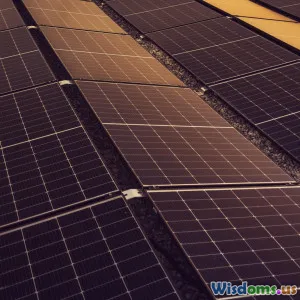
How Technology Shapes Modern Fashion
7 min read Explore how cutting-edge technology revolutionizes modern fashion, from design to sustainability. (0 Reviews)
How Technology Shapes Modern Fashion
Fashion, often seen as an ever-changing art form, is undergoing its most profound transformation yet—not just in style but in how garments are created, marketed, and consumed. This revolution is powered by technology, seamlessly weaving innovation into the fabric industry. From AI-led design to 3D printing, technology is redefining what fashion means in the 21st century. But how exactly is this shaping modern fashion? In this article, we delve into the multifaceted impact technology is having on the fashion landscape and what it means for designers, consumers, and the environment.
1. Technology-Driven Design Innovation
AI and Machine Learning in Fashion Design
Artificial Intelligence (AI) is no longer confined to tech giants and labs—it’s now a collaborator in creative fields. In fashion, AI algorithms analyze vast worlds of trend data, customer preferences, and cultural signals to predict what’s next. Companies such as Stitch Fix employ AI to create personalized clothing recommendations tailored to individual styles and body types.
Designer brands like Tommy Hilfiger partnered with IBM to utilize AI in curating collections by analyzing trends and consumer feedback, driving more accurate forecasting and minimizing overproduction.
Virtual and Augmented Reality Tools
VR and AR technologies are revolutionizing the design process by allowing designers to visualize clothes on virtual models or themselves before cutting any fabric. This reduces the need for physical samples, accelerating the design cycle and decreasing waste. For example, Gucci introduced an AR app that allowed customers to try on shoes virtually.
2. Revolutionizing Production Processes
3D Printing: Manufacturing on Demand
3D printing has introduced new horizons, enabling designers to create intricate patterns and unique textures impossible via traditional methods. The technology supports on-demand manufacturing, reducing excess inventory and lowering carbon footprints. Designers like Iris van Herpen have showcased jaw-dropping 3D printed couture, merging technology and craft.
Smart Fabrics and Wearables
Innovations in textile technology have birthed smart fabrics that respond to environmental stimuli—be it temperature, body movement, or moisture. For instance, companies are developing fabrics that adapt to body temperature, keeping wearers comfortable in changing climates.
Furthermore, integrating sensors into clothing has propelled the wearable tech market, with brands like Ralph Lauren creating polo shirts that track biometric data for athletes.
3. Personalization and Consumer Experience
Mass Personalization and Custom Fit
Thanks to scanning and AI, customers can now personalize designs and obtain garments tailored to their exact measurements without the cost of bespoke clothing. Brands like Adidas employ data-driven approaches for custom sneakers, enabling customers to choose both style and fit.
Virtual Try-Ons and Digital Fashion
Especially accelerated by the Covid-19 pandemic, digital fitting rooms reduce uncertainty in online shopping. Apps using AR help consumers see how clothing fits in real-time.
Beyond this, the rise of digital fashion—clothes worn virtually on social platforms—is an emerging trend, marrying gaming, fashion, and technology in entirely new ways for individual expression.
4. Sustainability: Technology Combats Fashion Waste
The fashion industry contributes to nearly 10% of global emissions and massive textile waste. Technology offers tools to address these issues:
-
Blockchain for Supply Chain Transparency: Tracking every component from raw material to final product helps verify ethical sourcing and reduce counterfeit goods.
-
AI for Inventory Management: Retailers use AI to predict demand more accurately, curbing overproduction—a major source of waste.
-
Biofabrication: Companies like Bolt Threads are creating lab-grown leather alternatives, offering eco-friendly options without harming animals or environment.
These innovations empower brands and consumers alike to make more responsible choices.
5. Challenges and The Road Ahead
While technology provides immense opportunities, it also poses challenges such as digital divide issues, affordability, and concerns over data privacy especially in personalized fashion services. Moreover, there is a delicate balance to maintain between machine input and human creativity.
Looking ahead, the fusion of technology and fashion is set to deepen. Emerging technologies like quantum computing and advancing sustainability materials promise even greater disruption.
Conclusion
Technology has irrevocably changed the way fashion is imagined, produced, and experienced. From AI-powered designs and 3D printed garments to AR try-ons and sustainable innovations, technology enables both creativity and ethics to flourish simultaneously. As fashion becomes more integrated with cutting-edge tech, consumers will not only tailor their wardrobes but also influence an industry increasingly aware of its environmental footprint. Embracing this tech-driven era offers the potential for fashion that is smarter, more inclusive, and above all, more sustainable.
Whether you’re a fashion insider, tech enthusiast, or consumer, understanding how technology shapes modern fashion is crucial in navigating and contributing to this exciting future.
Inspired by ongoing innovations; tech is weaving a new thread into the tapestry of fashion.
Rate the Post
User Reviews
Popular Posts





















